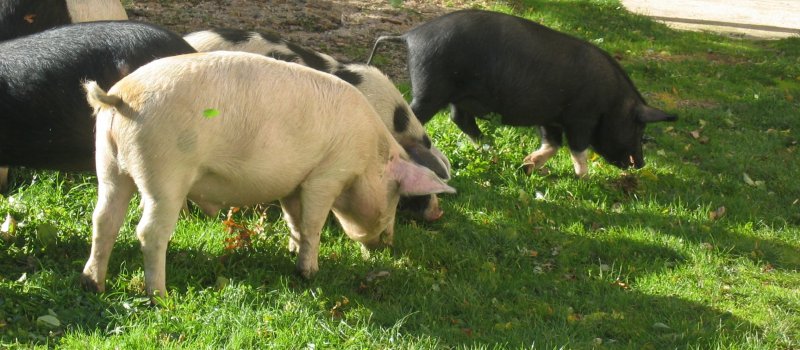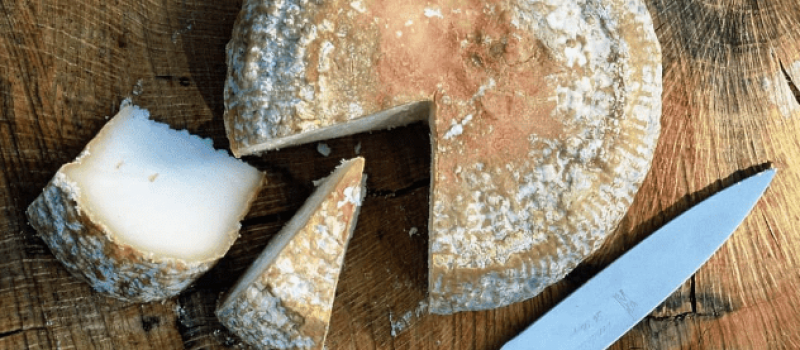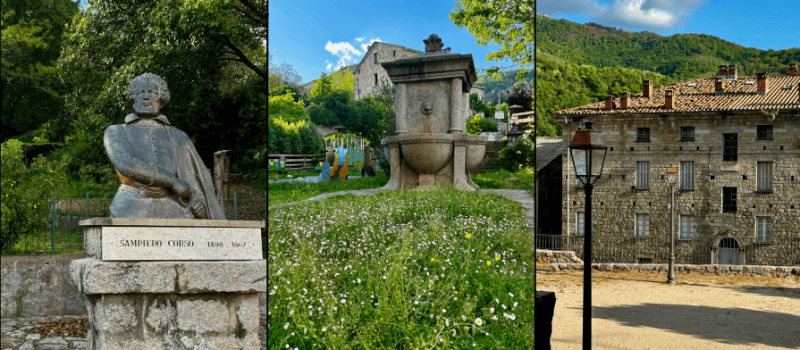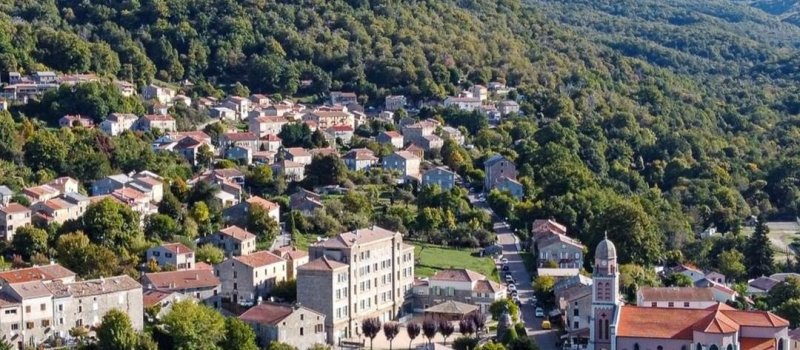Bastelica The art of living in Corsica
Bastelica and the Prunelli Valley in the heart of Corsica
A Bella Scusa : Overlooking the fabulous Prunelli valley, in the Regional Natural Park of Corsica, Bastelica is a village with character. In the heart of the mountain and crossed by a river, decorated with granite houses, cobbled streets, fountains and old ovens… The architecture of the place testifies to the rich history of an island that has not yet revealed all its secrets. Follow the spectacular path of the waters of the Prunelli, along the gorges that lead to Lake Tolla, then from the mountain to the sea. Discover its tasty charcuterie and enjoy peaceful and intense pleasures. Finally, explore an incredibly generous nature that harbors preserved traditions and know-how.
Bastelica : Corsican charcuterie and cheeses
We can’t talk about Bastelica without mentioning its greatest asset. The village is renowned for its agro-pastoral traditions and farm produce, particularly its artisanal charcuterie. It’s home to many quality charcuterie and cheese makers, whose farms you can visit. On-site tastings are also available.
For your enjoyment: Corsican ham, coppa, figatellu, lonzu, sausage, and the typical fitonu are produced in the village itself ! The mountains also honor cheese specialties, with goat farms. You can taste high-quality and renowned cheeses on site, such as the famous brocciu. We can, of course, tell you where to find these excellent products.
Don’t hesitate to seize this opportunity to discover authentic flavors !


History and Heritage
Paths of Memory – Heritage Trail
One of the oldest remains: the foundations of the chapel of Sant’Austinu (11th century), towards La Scalella. Explore the village along the Heritage Trail. You can admire the fountains, chapels, bread oven, and other typical buildings. The path leads you to the heart of the hamlets, from fountains to mills, in a green setting. Discover the history of Bastelica, from its creation to the present day.

From valiant Sampiero to Shakespeare’s Othello
It was in Bastelica in 1498 that the famous Sampieru Corsu was born. He is one of the mythical characters who shaped the history of Corsica. With Napoleon Bonaparte who needs no introduction and Pasquale Paoli, man of enlightenment and founder of the Corsican nation. An illustrious soldier in the service of the Medici and Pope Clement VII among others, Sampieru fought to liberate Corsica from Genoa. Tragically known for having killed his wife, Vannina d’Ornano, with his own hands, he is said to have inspired William Shakespeare for Othello.

Architecture of the village in central Corsica
Bastelica’s hamlet houses are arranged in an amphitheater. The village is surrounded by mountain pastures dotted with chestnut trees, and numerous mule tracks connect it to other valleys. The architectural heritage, discovered at every turn as you wander, combines medieval houses with the homes of notables from the 17th and 19th centuries.
There are also a multitude of bread ovens, fountains, and old wash houses, as well as numerous chapels testifying to the village’s organization. A few meters from the house, the Baroque-style Church of San Michele dates from the 17th century. It houses remarkable works, listed or classified as Historic Monuments. You can also admire frescoes by the painter Frassati and remarkable stained-glass windows.
In and around Bastelica village
Outside the village, you can see the chestnut drying sheds and flour mills from the 19th century. These are all vestiges attesting to the rich history of the area.
In the Pineta territorial forest, the Genoese bridge of Zipituli can be seen in a charming landscape. This beautiful single-arch bridge connected Bastelica to Ajaccio in the 16th century.
Mainly composed of pastoral families who moved regularly according to the needs of livestock farming, the inhabitants gradually settled down. Towards the end of the 18th century, Bastelica is described as the village with the largest number of shepherds.

